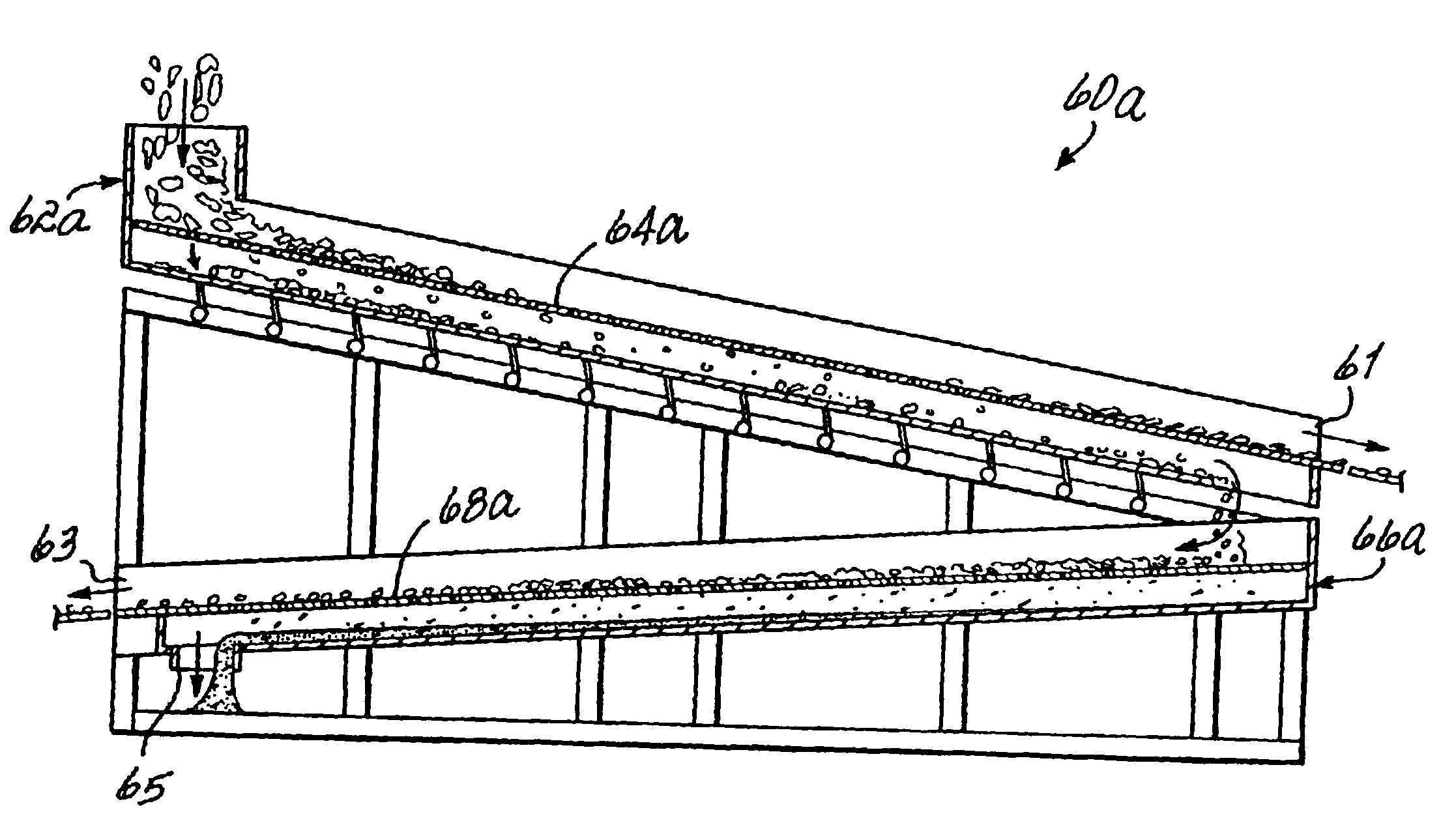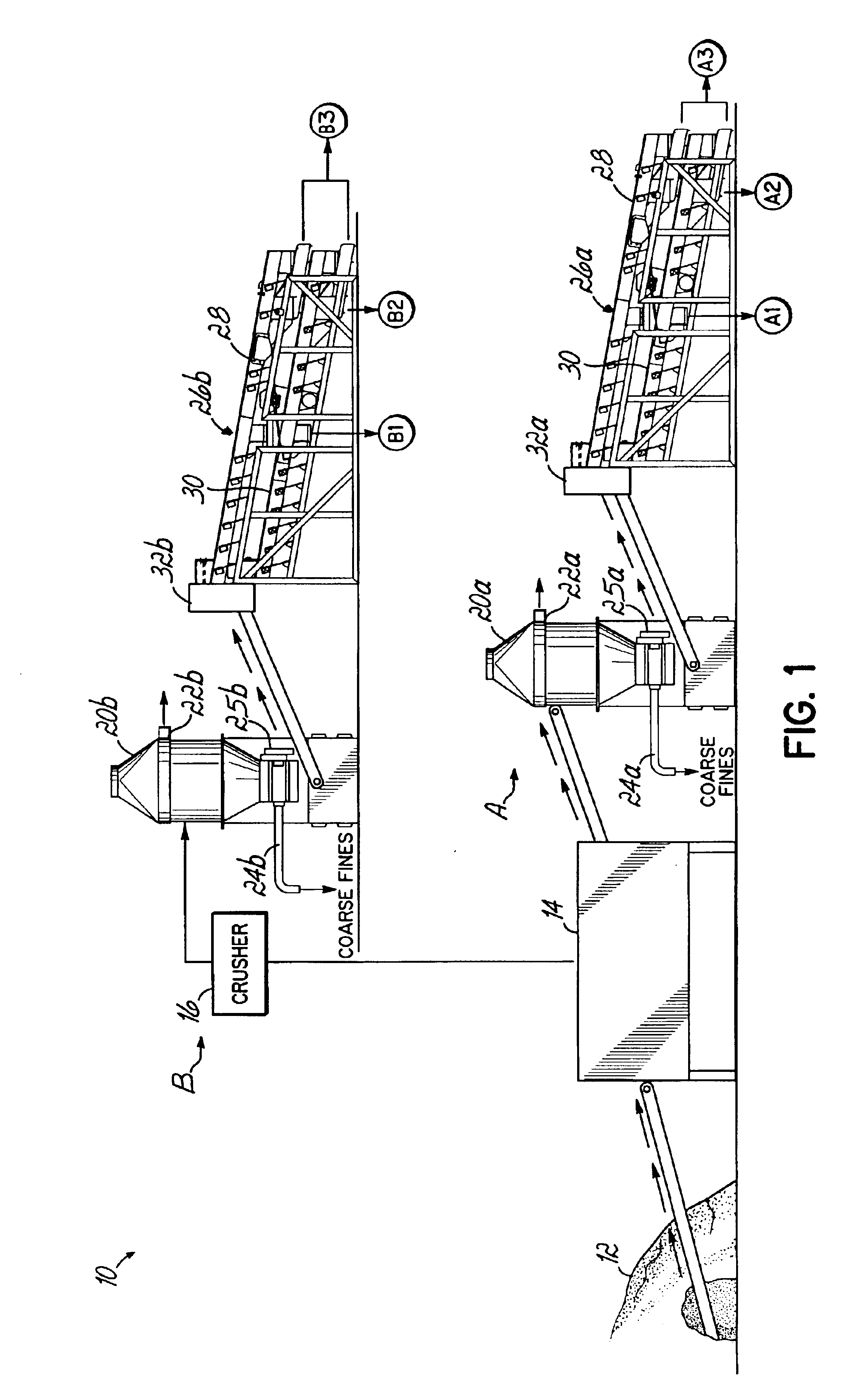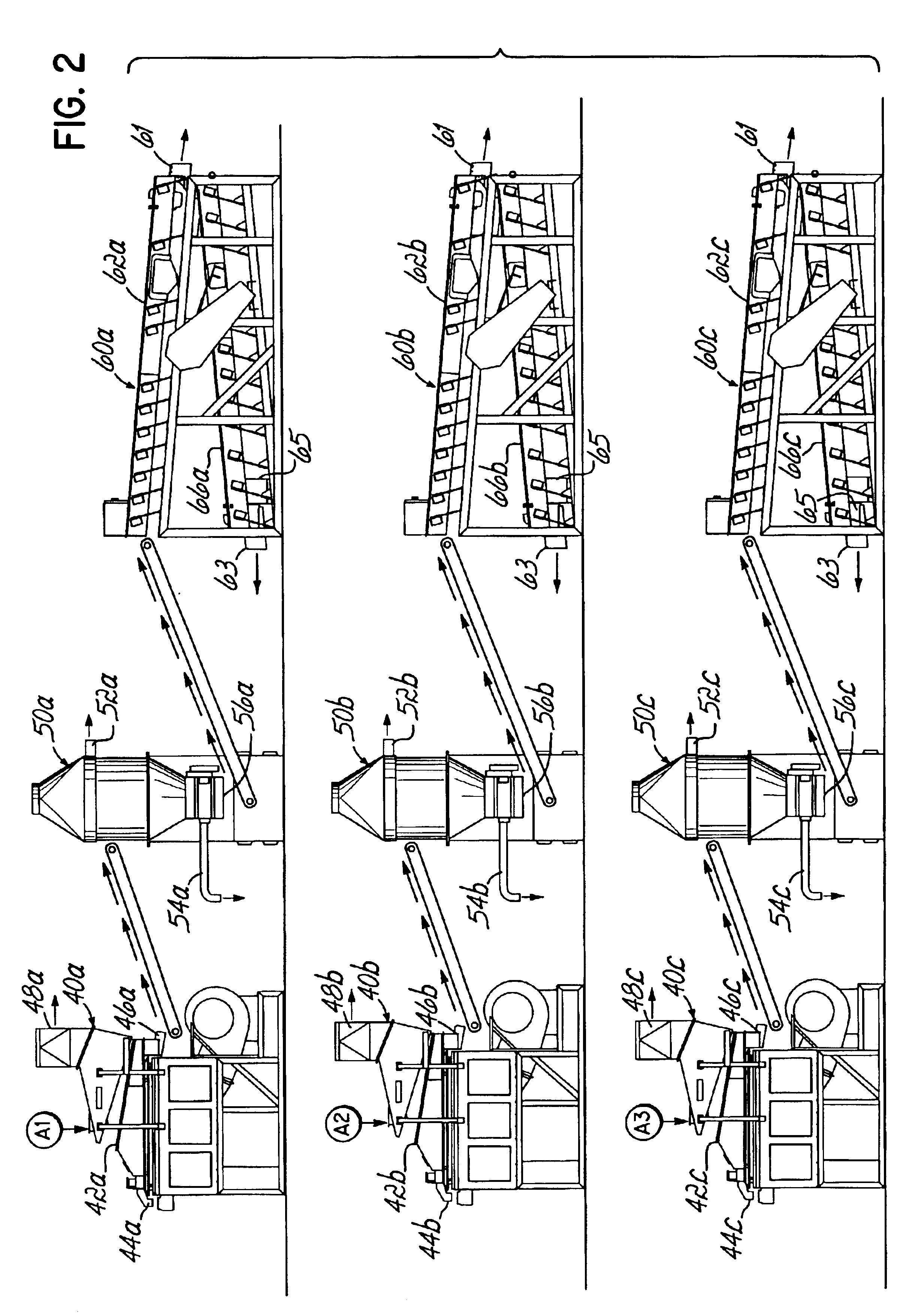Apparatus and method for dry beneficiation of coal
a dry beneficiation and coal technology, applied in the field of dry beneficiation of coal, can solve the problems of general decrease in combustion efficiency, ash materials create pollution problems, and limit the amount of sulfur dioxide which can be emitted by such facilities, and achieve the effects of less environmental impact, less capital outlay, and higher calorific valu
- Summary
- Abstract
- Description
- Claims
- Application Information
AI Technical Summary
Benefits of technology
Problems solved by technology
Method used
Image
Examples
Embodiment Construction
[0019]Referring to FIGS. 1-3, there is shown an exemplary apparatus 10 of the present invention for dry beneficiation of coal. Raw coal is delivered from a coal mine 12 to a high-frequency shaker 14 which classifies and separates the raw coal according to size. In the exemplary embodiment, the high-frequency shaker 14 separates the raw coal into a first group having a size which is greater than a desired maximum size and a second group having a size which is less than the desired maximum size. The desired maximum size may be determined according to a desired final beneficiated coal size or by the size of equipment downstream of the high-frequency shaker 14. FIG. 1 depicts a single high-frequency shaker 14 however, it will be understood by those skilled in the art that more than one shaker 14 may be used to classify the raw coal, as may be required. The first group of coal material separated by the high-frequency shaker 14 may be directed to a crusher 16 which reduces the size of the...
PUM
 Login to View More
Login to View More Abstract
Description
Claims
Application Information
 Login to View More
Login to View More - R&D
- Intellectual Property
- Life Sciences
- Materials
- Tech Scout
- Unparalleled Data Quality
- Higher Quality Content
- 60% Fewer Hallucinations
Browse by: Latest US Patents, China's latest patents, Technical Efficacy Thesaurus, Application Domain, Technology Topic, Popular Technical Reports.
© 2025 PatSnap. All rights reserved.Legal|Privacy policy|Modern Slavery Act Transparency Statement|Sitemap|About US| Contact US: help@patsnap.com



